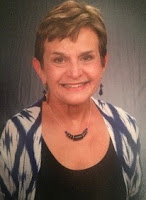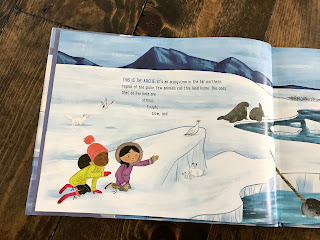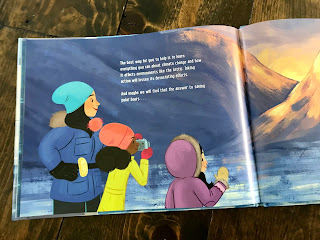by Julie Phend
What’s a Premise Palooza?
 Premise Palooza
is a fun idea for creating unique story concepts invented by my critique group:
authors Kara Laughlin, Joyana McMahon, Amy Thernstrom, and myself, Julie Phend.
Premise Palooza
is a fun idea for creating unique story concepts invented by my critique group:
authors Kara Laughlin, Joyana McMahon, Amy Thernstrom, and myself, Julie Phend.
Last December, we
were all completing long-term projects. This can be a discouraging time for a
writer—after years of commitment to a novel-in-progress, your heart can sink if
you’re not sure what to tackle next. So we decided to skip traditional
critiques that month and concentrate on creating memorable story premises. Our
quest became Premise Palooza.
How Does Premise Palooza Work?
In fiction, a
premise is defined as a one-sentence story concept that includes a protagonist,
a goal, and a situation. For our challenge, we agreed to do the following:
- Spend 15 minutes each day brainstorming premises.
- Not censor any ideas.
- At the end of the month, choose our 10 most promising ideas and write a pitch paragraph for each.
To keep
ourselves accountable and bolster morale, we emailed weekly to report our
progress. We had some good laughs as we shared a few of our zanier ideas.
Each week, we
took turns being in charge of prompts to stimulate creative thinking. We found
three techniques to be particularly useful. Here’s how they worked:
Daily Prompts:
Each night, the prompter sent three
random prompts, which could be used together, separately, or not at all.
Examples:
- A gummy advent calendar, A cross-country train car, Mardi Gras
- A secret underwater laboratory, Enemies forced to work together, National Pun-off
- New Year’s Eve, An abandoned mine shaft, A secret
Prompts became
especially helpful as the month went on and our personal idea wells began to
dry up. We discovered that a prompt
generated by someone else often sends you in a direction you would never have gone
on your own.
 |
| A Page from Julie's Notebook |
Borrowed Premises:
Here, the challenge was to take classic
premises from books or movies and retell or update them. This strategy yielded
some great story ideas.
Examples:
- An update of the Scarlet Letter where a kid is forced to wear a C for cheating
- A
Christmas picture book based on Elf in
which the family dog (instead of the baby) climbs into Santa’s sack.
Chain Premises:
This technique
involved taking an existing premise—either our own or someone else’s—and
changing one element at a time, resulting in a long list of permutations.
We all liked this exercise and were often surprised at
where we ended up. We felt it really pushed us to be creative—and it was fun
because it produced new ideas quickly.
Amy shared a
chain sequence that began with a borrowed premise. She said, “My 11-year-old
son helped me brainstorm. We wrote down absolutely anything that came to our
heads, no matter how silly, as you can see by the examples below.”
(The premises
marked with an asterisk * were generated by Amy’s son.) The
original idea comes from “Robbie,” a short story by Isaac Asimov.
1.
Asimov’s premise: Busy parents hire a robot babysitter—but worry
when the child gets too attached.
2.
Busy parents hire a robot bodyguard, but worry when the bodyguard
turns out to be a coward.
3.
Busy parents hire a robot bodyguard, but worry when the child
destroys him during a temper tantrum.*
4.
Busy parents hire a dragon babysitter, but worry when the child gets
scared.*
5.
Busy parents hire a dragon babysitter, but worry when the child
starts breathing fire.
6.
Busy parents hire an alien babysitter, but worry when the child
starts growing a third eye.*
7.
Busy parents hire an alien cook, but worry about the ingredients of
the food.
8.
Busy parents hire a dragon cook, but worry when the food is charred.
9.
A kid and his parents are kidnapped by a dragon and forced to
babysit a dragonet.*
10.
A kid and his parents are hired by Santa Claus to babysit the
elves.*
Testing our Ideas:
At the end of
the month, we each wrote pitches for our most promising ideas and gave each
other feedback. We also shared them with the children in our lives and asked
which stories they’d most like to read. It was fascinating to learn which
premises children of different ages liked and why.
Was it Successful?
 |
| Amy Thernstrom |
I asked the
group to comment on their Premise Palooza experience.
Amy: There was something magical about putting all other writing
aside and focusing exclusively on generating premises for a solid month. I
wrote more than I ever thought possible.
 |
| Kara Laughlin |
Kara: It kept me writing during a time of year that typically sees
me away from my desk.
Joyana: It was fun to focus on exercising the idea-generating part of my brain without inhibitions. No idea was a bad one during the process.
 |
| Joyana Peters McMahon |
Julie: I’ve always been a writer who grabbed the first idea that
came into my head. This challenge pushed me to stretch my thinking and become
more creative.
Brainstorming premises is clearly a lot
of fun. But does it yield valid story ideas?
We all felt that
it did. Two of us are currently writing stories based on the challenge, and
we’re all excited to have to have a well of story ideas to draw from when we
need them.
 |
| Julie Phend |
Try It!
So, if you’re
looking for a way to spark your creativity, grab a group of friendly writers and
organize your own Premise Palooza. Maybe a Pandemic Premise Palooza is in your
future.




























